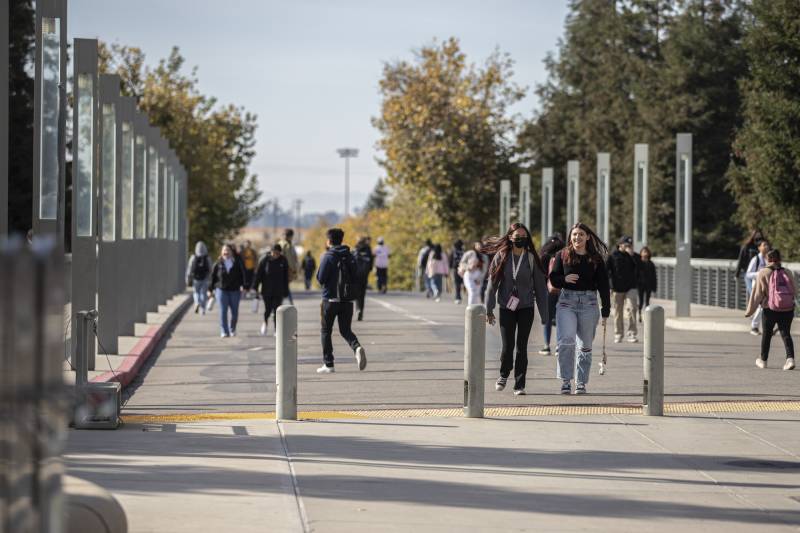By May, more than 1 million Americans have already gotten $51 billion in debt relief through this adjustment program, according to the department.
The student loan landscape is notoriously complicated. A National Public Radio reporter whose investigation exposed how borrowers placed in the wrong repayment category lost the ability to gain credit toward loan forgiveness quipped that if none of this makes sense, “You’re not alone.”
To meet the June 30 deadline, borrowers must submit applications to consolidate their loans into so-called direct consolidation loans. Only loans in the direct program are eligible for loan forgiveness after 10 or 20 years of payments, depending on a borrower’s employment situation. Direct loans also qualify for lower monthly payments.
Some borrowers may see no reason to consolidate, but for many others, meeting the June 30 deadline will be a life-changer.
To apply, a borrower needs to create an account with the Federal Student Aid office and then complete the consolidation application, which itself takes about 30 minutes.
California state agency tries to help
Most Californians with loans that aren’t in the direct program should apply to consolidate, said Celina Damian, the state’s first Student Loan Servicing Ombudsperson.
This week, California is also debuting a network of 14 nonprofit organizations that collectively received $7 million in state grants to help California borrowers navigate the maze of student loan policies, hurdles and deadlines.
The Student Loan Empowerment Network will offer California borrowers in-person or phone consultations to handle their student loan quandaries, including issues surrounding private student loans that are governed by a different set of rules.
“It was created really to just have somewhere for borrowers to go and provide more help than I can provide,” Damian said. Until last week, she was the only person in state government doing this work.
Between March 20 and May 1, Damian communicated by phone or email with 1,400 borrowers after her office sent an email to Californians who’d likely benefit from loan consolidation.
Some borrowers didn’t realize they possessed federal loans that were eligible for any loan forgiveness, Damian said. The borrowers instead thought they were repaying private loans. Others thought her agency’s outreach was initially a scam. “So they would reach out and say, ‘Is this real? I thought there was no option for me,” she recounted.
Damian stressed that a growing number of California borrowers are senior citizens who may struggle to complete the federal online application. “The oldest one I spoke to was about 83, 84”, she said. “These are loans they took out in the ‘90s.”
Several times, borrowers nearly gave up trying to apply, so she told them to complete the paper version of the application and email her photos of their paperwork. She then collated their photos into a PDF document and submitted the paperwork to the U.S. Department of Education on their behalf.
How did we get here?
Federal Family Education Loans were common loans issued by private lenders but guaranteed by the federal government. In 2010, these loans were discontinued, and the federal government began issuing student loans directly.
The old loans qualify for federal loan forgiveness programs, which offer less generous repayment plans and require more years of repayment.
These loans are also ineligible for Public Service Loan Forgiveness, a loan program for government and nonprofit workers that forgives federal undergraduate and graduate student loan debt after 10 years of payments. The only way to qualify for that loan forgiveness is by repaying direct loans — which borrowers with Federal Family Education Loans can do if they consolidate by June 30. Once their consolidation goes through, borrowers will need to apply for the Public Service Loan Forgiveness program, but they will have inherited past credit already through the steps they took to consolidate.
Borrowers need to only apply for consolidation by the June 30 deadline. The department’s actual review process will take at least 60 days.
Borrowers who are found to have made at least 20 years of payments for undergraduate loans or 25 years for graduate loans will see their loans fully forgiven — a tax-free perk through 2025.
Things to consider for student loan forgiveness
A key benefit of consolidation: Borrowers can choose to be placed on the SAVE repayment plan, which bases monthly payments on current income and offers loan forgiveness for any income level after 20 or 25 years.
The SAVE plan also doesn’t charge interest as long borrowers make regular payments.
Not all repayment periods will count toward one’s loan credit under the federal government’s one-time program. Any time spent in default won’t count.
Loans in periods of deferment will count, but only before 2013. If loans were deferred because a borrower re-entered college, such as to complete a bachelor’s or earn a master’s degree, that time wouldn’t count toward the borrower’s credit.
If borrowers have older loans and Parent PLUS loans that they took out on behalf of their children, they should weigh their options, Damian said. Parent PLUS loans are eligible for only one type of loan forgiveness plan that’s less generous, and consolidating those loans with other loans will block the borrower from the newer repayment plans.

